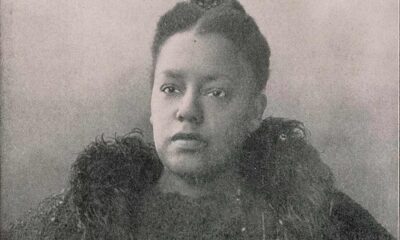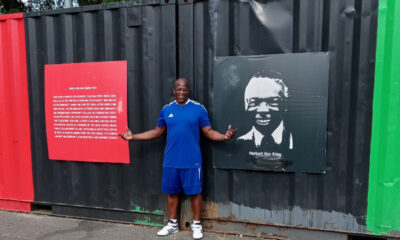Black History
Concord Church’s History of Women Activists

“Preserving Memories, Preserving Ourselves”
by The Rev. Dr. Emma Jordan-Simpson (Part II of Four)
The Black suffragists who were members of the Concord Baptist Church of Christ before 1920 were the beneficiaries of the work and witness of church women who began planting and cultivating the seeds of freedom and wholeness soon after the church’s founding in 1847.
The actions and commitments of these women illuminate a tradition of activism that first begins with a deep love for the wellbeing of the people. Do the people have a place to live? Have the people eaten? Are the people well?
Their efforts to answer those questions set in motion the building of an infrastructure of ministry support that would benefit those who came after them.
Maria Hampton and Hagar Washington were founding members of Concord Church. After Cecilia Broughton joined the church, these three women organized with other women in the community in 1866 to create the Female Union Relief Association for the Colored Poor of Brooklyn.
Many Black churches created burial societies and mutual help organizations because Black people had to depend on each other for care and support in times of need. In their advertisement of the fund for the Colored Poor of Brooklyn, the women promised strong administration of its resources.
Their initial public campaign to raise funds for relief was quite successful, bringing in $72.24 (about $1,488.00 in today’s currency).
Delighted with their efforts, Pastor William T. Dixon published a personal letter of thanks addressed to Brooklyn’s “generous public” in gratitude.
This may seem like a simple story of a successful charity effort. But when we consider what develops in ensuing years, this fund that was started in 1866 should be viewed as a catalyst for the creation of other such efforts that worked to strengthen the fabric of community.
With each such effort, they reimagined how Black Brooklynites might be made whole. They only had each other which, for the women, was a good place to start.
The Concord Mutual Relief Fund was created in 1877 to pay special attention to the needs of the poor members of the church.
The Fund’s Trustees were male and female. By 1888, Concord Church had 600 members and a number of thriving organizations led by women like the Dorcas Home Missionary Society and the Helping Hand.
The church and these organizations were the training grounds for women in leadership.
There, women learned to raise money, to strategize to meet community needs, and to organize with women in other churches around the issues affecting their lives.
Mrs. Anna Perkins joins Concord in 1884, bringing wisdom and experience with her.
An older woman, she was quick to become a constant presence and supporter of younger women. Never President or Chair, Mrs. Anna Perkins, was always ‘secretary.”
Though the Dorcas Home Missionary Society was considered a mature organization within the church when Perkins became active in 1885, by 1909 Perkins was known as its “General Secretary.”
Dorcas expanded its purpose under her “mothering.” It grew beyond the church to engage black women in the community in its work.
The Recorder of Indianapolis notes that the Dorcas started to provide assistance within the church, “but soon, its helping hand extended beyond the limits of its home circle. Wherever the cry of the orphan is heard or the needy is found, the society lends its aid.”
However, church organizations within Concord like Dorcas did more than provide aid to the needy. They did more than feed the hungry and care for the sick.
When they mentored younger women to be leaders, they sent a better letter to the future than the letter they received.
They used their skills to address issues like racial violence, racial uplift, civil rights, and women’s rights. Church work prepared Black women whose names and stories we will never know, to change the trajectory of our communities with faith and service.
They addressed the whole of Black lives and taught others to do the same.
Next, we will turn to a key figure in Black women’s suffrage in Brooklyn who was sitting under the influence of Mother and General Secretary Anna Perkins – powerhouse Alice W. Wiley Seay, founder of the Empire State Federation of Women’s Clubs and one of the leading builders of the Brooklyn NAACP Chapter.





